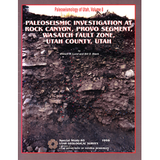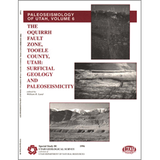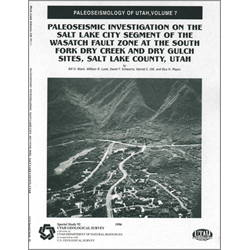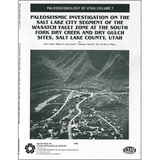Paleoseismology of Utah, Volume 7: Paleoseismic investigation on the Salt Lake City segment of the Wasatch fault zone at the South Fork Dry Creek and Dry Gulch sites, Salt Lake County, Utah (SS-92)
By: B. D. Black, W. R. Lund, D. P. Schwartz, H. E. Gill, and B. H. Mayes
This Utah Geological Survey Special Study, Paleoseismic Investigation on the Salt Lake City Segment of the Wasatch Fault Zone at the South Fork Dry Creek and Dry Gulch Sites, Salt Lake County, Utah, is the seventh report in the Paleoseismology of Utah series. This series makes the results of paleoseismic investigations in Utah available to geoscientists, engineers, planners, public officials, and the general public. These studies provide critical information on earthquake timing, recurrence, displacement, slip rate, and fault geometry which can be used to characterize potential seismic sources and evaluate the long-term earthquake hazard presented by Utah's Quaternary faults.
The South Fork Dry Creek and Dry Gulch sites lie within a few hundred meters of each other in the southeastern part of the Salt Lake Valley, and together provide the only location on the heavily urbanized Salt Lake City segment of the Wasatch fault zone where it is possible to develop a complete surface-faulting chronology for the segment since middle Holocene time (the past 6,000 years). Investigations at the two sites took place intermittently between 1985 and 1995 as permission was obtained to trench more and more of the scarps within the broad fault zone. The new information reported here on the size, timing, and especially recurrence of surface-faulting earthquakes on the Salt Lake City segment shows that the earthquake hazard presented by this segment of the Wasatch fault is greater than previously thought. Such information is vital to public officials, planners, and others making decisions regarding earthquake-hazard mitigation.
Other Information:
Published: 1996
Pages: 22 p.
Plates: 1 pl.
Location: Salt Lake County
Media Type: Paper Publication









